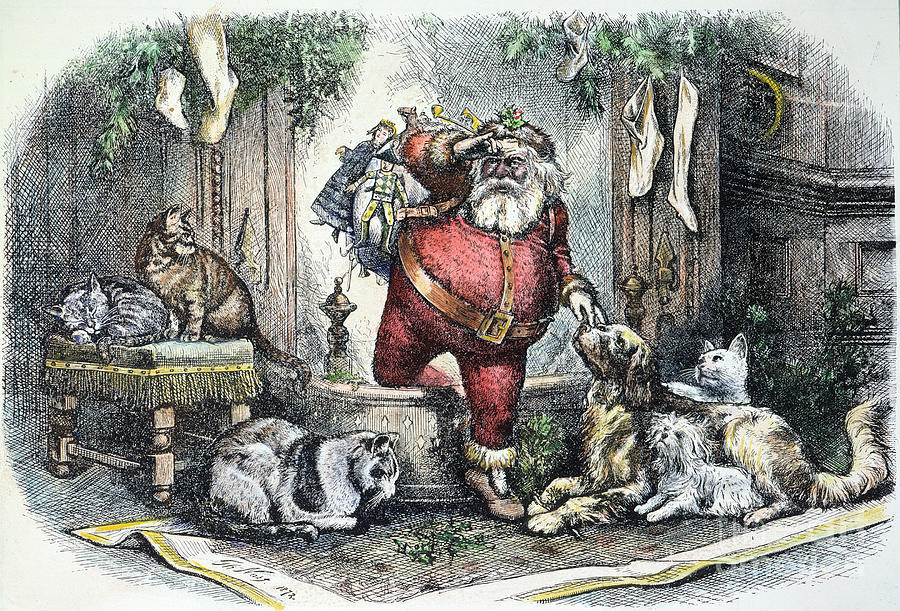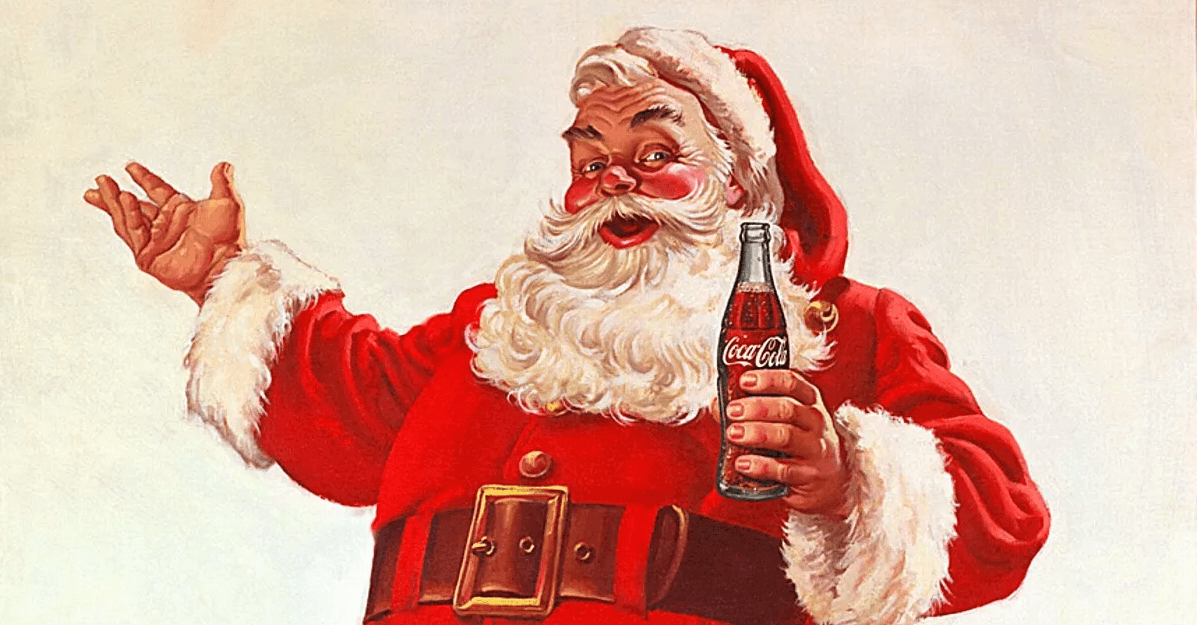According to the popular version, the familiar image of Santa Claus first appeared in a Coca-Cola advertisement. Let's check if this is true.
On the official Russian-language website of the Coca-Cola company said: “The modern image of Santa Claus appeared in the 1930s with the direct participation of Coca-Cola as part of the “Santa Drinks Coca-Cola Too” campaign. Archie Lee, chief executive of D'Arcy, the advertising agency hired by the company to work on the project, tasked Michigan artist Haddon Sundblom with creating an image of "the real Santa, not a person dressed like Santa." In addition, the image of the wizard had to be close and understandable to the heart of every person: from a child to a pensioner.”
The same article describes how the image was born. Allegedly, Sundblom initially decided to use his neighbor Lou Prentice, who was an attractive retired traveling salesman, as a model for the drawing. But while working on the first sketches, Prentice unexpectedly died. Then the artist looked in the mirror and decided to draw himself as Santa.
“The new Santa made his debut on Christmas Eve 1931... in... The Saturday Evening Post, and then advertising modules with him were published in Ladies Home Journal, National Geographic, The New Yorker and many other American media. For another 30 years, Sundblom created a new painting of Santa for each Christmas,” says an article on the website Coca-Cola.
Coca-Cola's contribution to the popularization of the modern "red and white" image of Santa Claus, of course, cannot be underestimated. However, the facts say that neither the company nor the artist Sundblom had anything to do with its creation. This is an urban legend popular all over the world, which is promoted by Coca-Cola itself.
The origins of the Christmas image of Santa, in addition to Christianity (after all, none other than St. Nicholas the Wonderworker is considered its prototype) and Western European folklore, must be sought in the works of writers of the first half of the 19th century: Washington Irvine, Charles Dickens and especially Clement Moore.
In 1823, Moore published the poem "A Visit from St. Nicholas." The title character in it described So:
...I froze at the window in amazement:
Wonderful sleigh and eight reindeer.
The coachman is a lively, dashing old man.
Yes, yes, it's Santa - who else?
...Dressed in fur from head to toe
(Santin’s luxurious outfit is covered in soot!),
With a bag slung over his shoulder,
Stuffed with toys - what else!
Eyes shine like stars in the cold,
Two apples - cheeks and a cherry nose.
A smile - I’ve never seen a funnier one!
His beard is as white as morning snow.
(translation by Olga Litvinova)
It goes on to say that Santa has a round, fat belly that shakes when its owner laughs. And he himself smokes a pipe and looks like an elf.
In 1863, American artist Thomas Nast drew Moore's character, and after the success of the drawing, he became a regular subject of funny pictures for magazine publications. Nast came up with new facts for Santa’s biography: for example, that he lives at the North Pole and writes down all the children’s actions in a special book in order to decide who is worthy of a gift and who is not.
In Nast's drawings, Santa Claus's fur coat changed from brown over time to become more and more red. Coca-Cola insists that, unlike previous versions of the image, Sundblom has “taken away” Santa's pipe. But this is also not true. On the covers of the Christmas issues of Puck magazine in 1904 and 1905, Santa does not have a pipe. And in general, his image there is no fundamentally different from those that will appear in Coca-Cola advertising 25 years later.
It's interesting that even the idea of using the image of Santa Claus to advertise a soft drink was not innovative either. In 1915 the company White Rock Beverages placed it on advertising its mineral water, and in 1923 - ginger ale.

Mostly lies
Read on topic:
- https://en.wikipedia.org/wiki/Santa_Claus
- https://www.snopes.com/fact-check/the-claus-that-refreshes/
- https://www.ft.com/content/05d50738-176a-11ea-8d73-6303645ac406
If you find a spelling or grammatical error, please let us know by highlighting the error text and clicking Ctrl+Enter.







